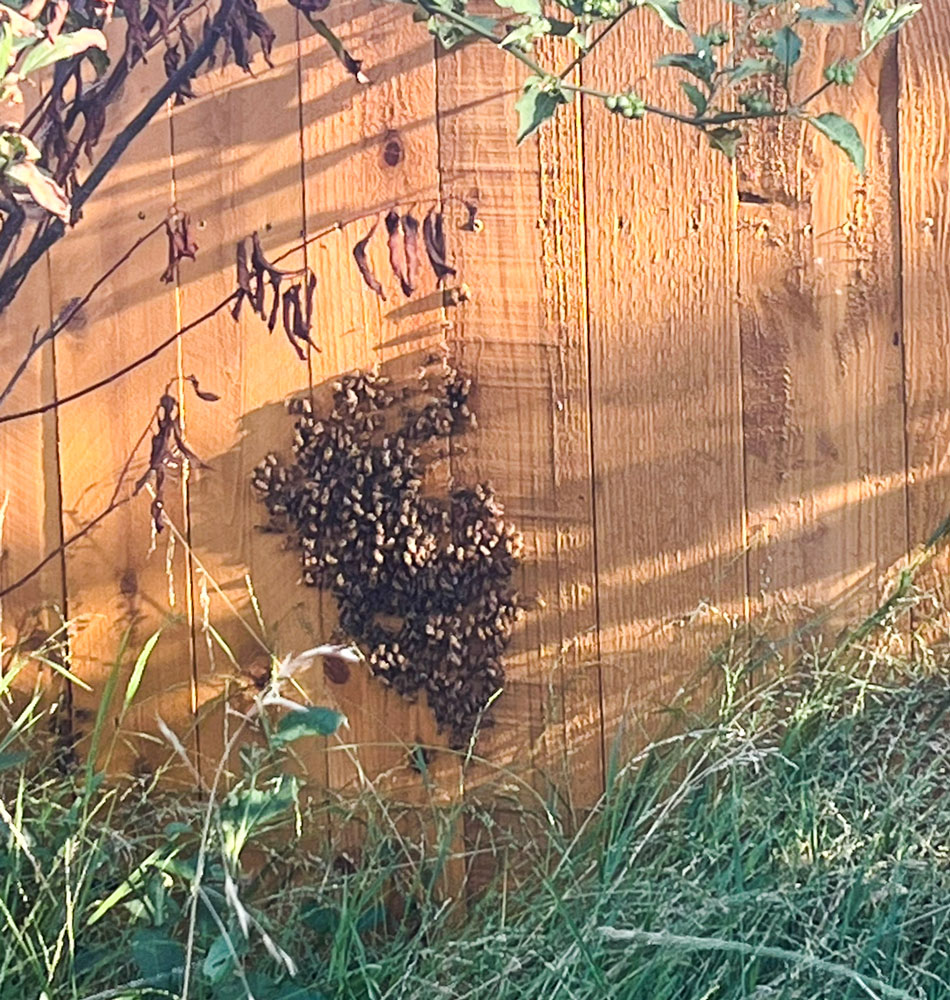
Cutout in a Fence
August 24, 2022
P. Michael Henderson
I received a message from Amy asking me if I was interested in picking up some bees that were in her fence. Once I learned that the fence was wood slats that could be easily removed, that the fence was two sided (which created a cavity), and the bees were not aggressive, I agreed. Amy thought the bees had not been there long since she built the fence six months ago.
Here's a picture she sent me to show the bees. There's a knot hole in the side of one board and the bees used that as an entrance.

When I got there, I set up my equipment and took two boards off. Amy was taking the pictures so I didn't get a picture of her. I gave her a bees suit but the bees didn't bother her.
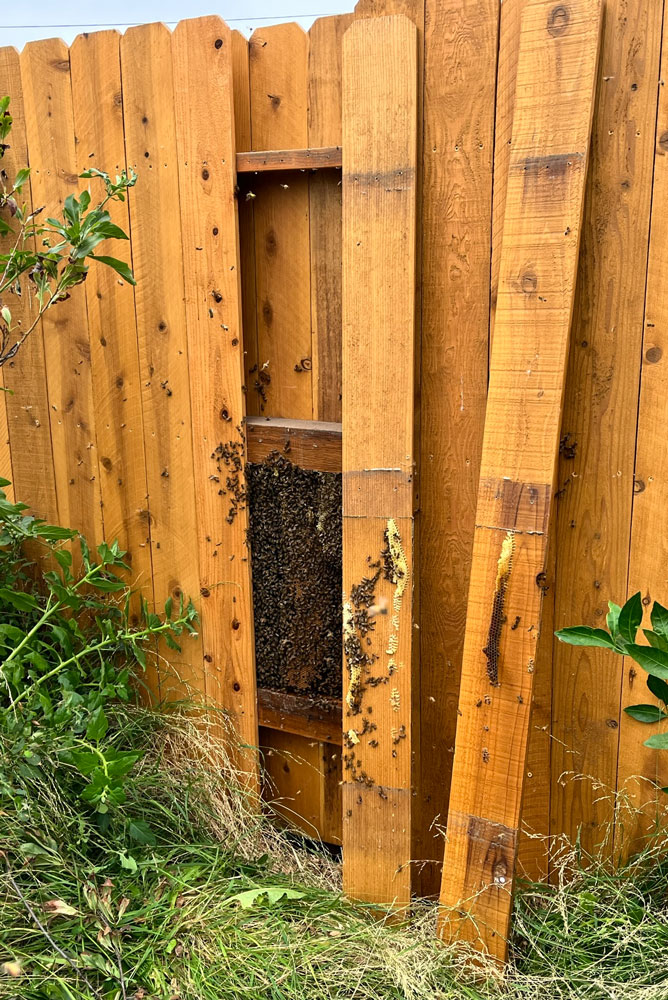
You can see the knot hole that the bees were using as an entrance. Just big enough for a couple of bees.
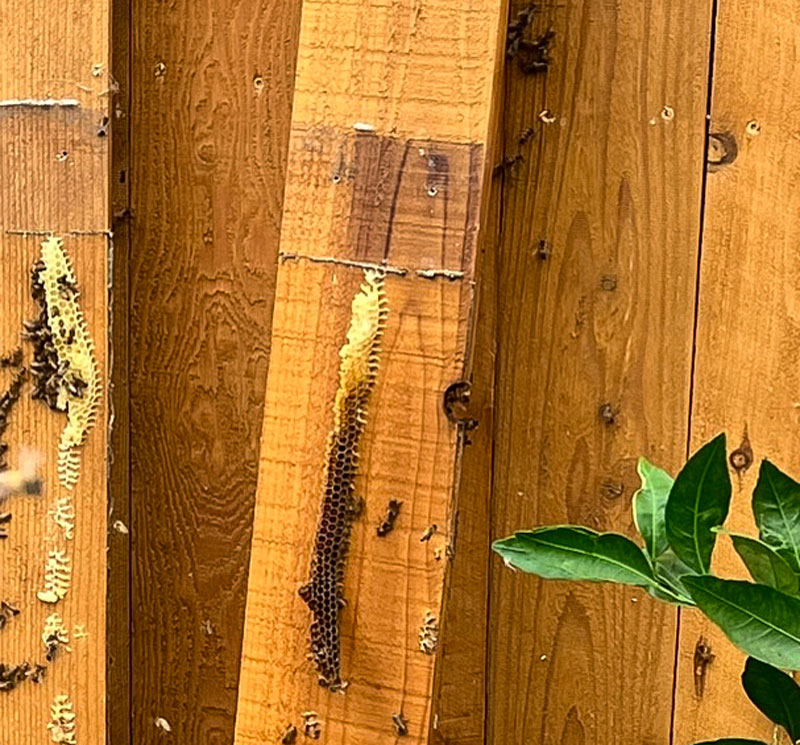
A closer look at the bees. There was a lot of comb in this area. I began to suspect that this hive was a lot larger than I expected. So far, the bees were very docile. I've done cutouts on very aggressive Africanized bees and these bees were nothing like that.
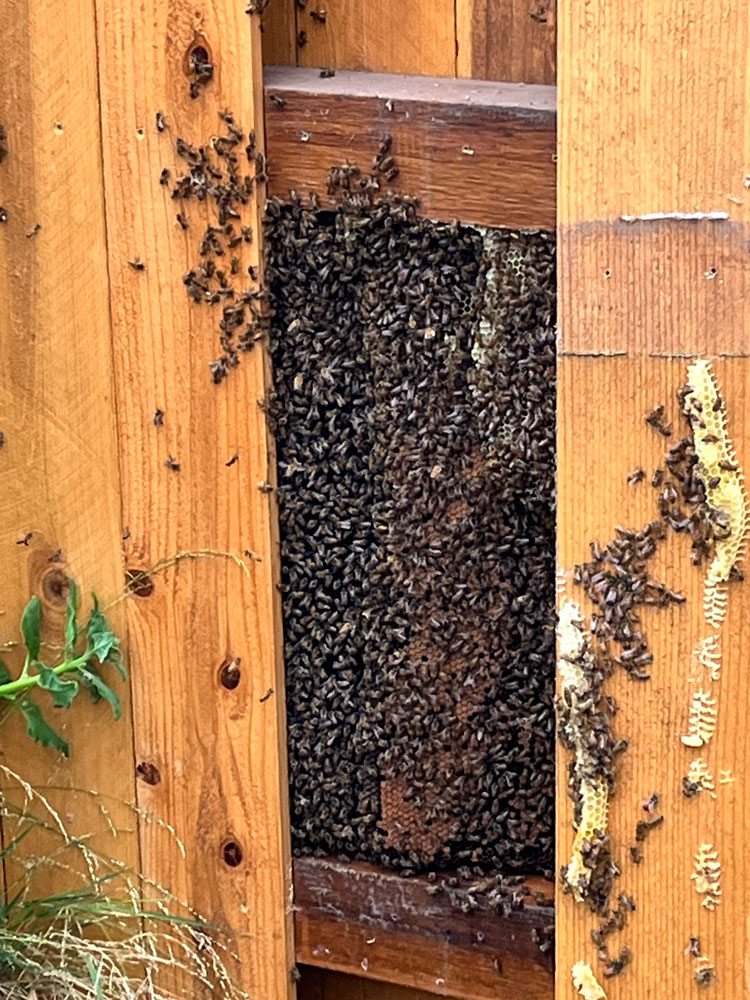
A wide shot to show you what the area looked like.
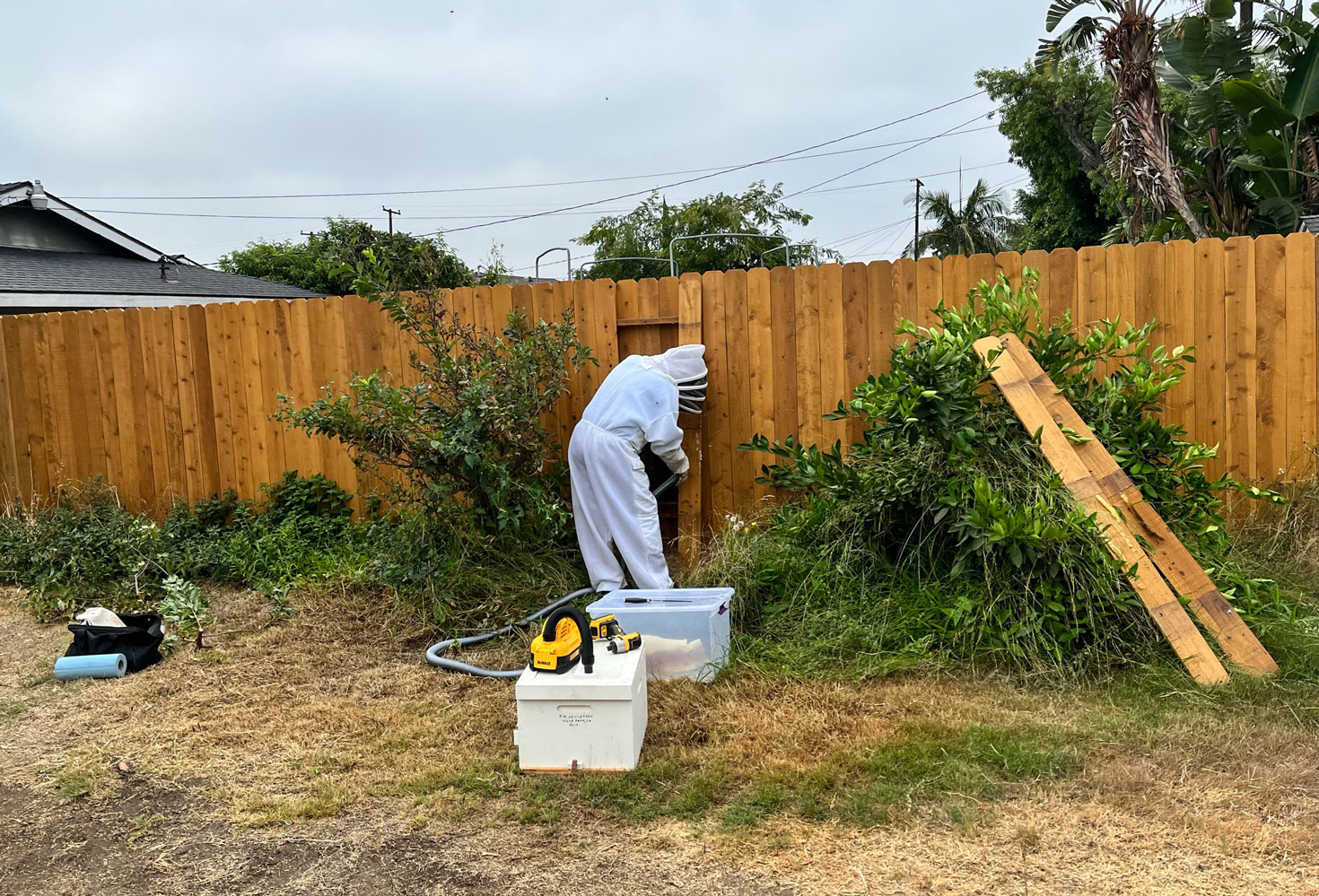
I removed more boards to expose all the comb.
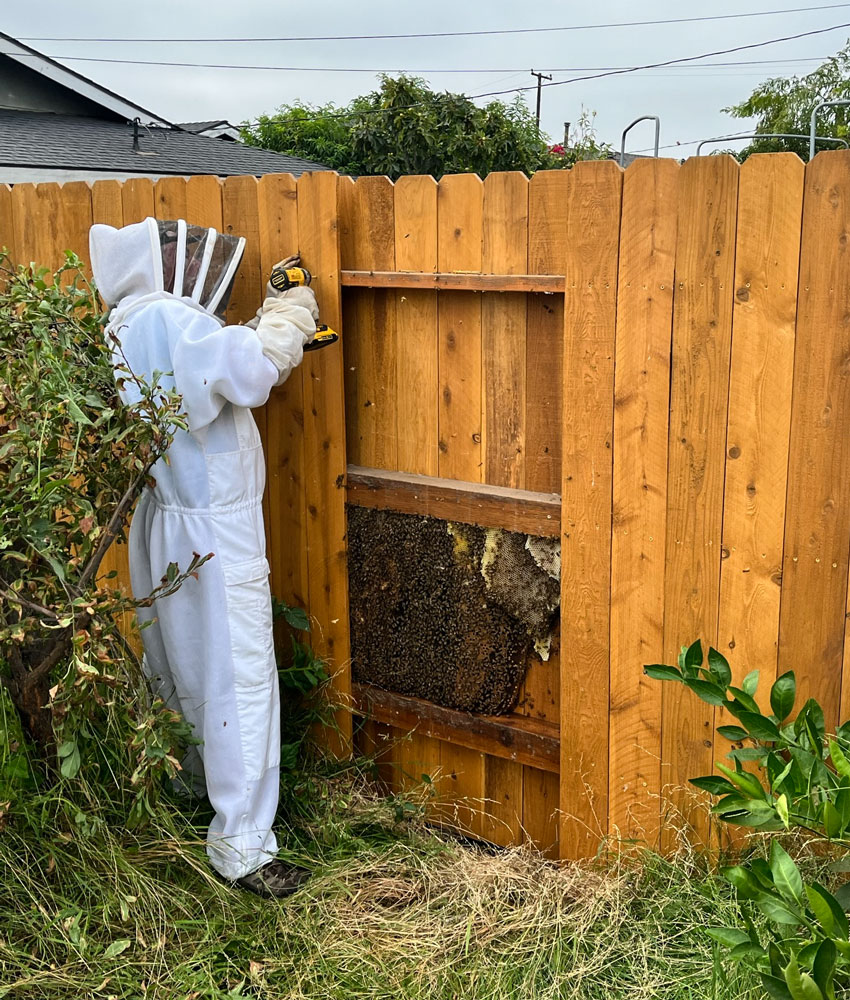
A closer view.
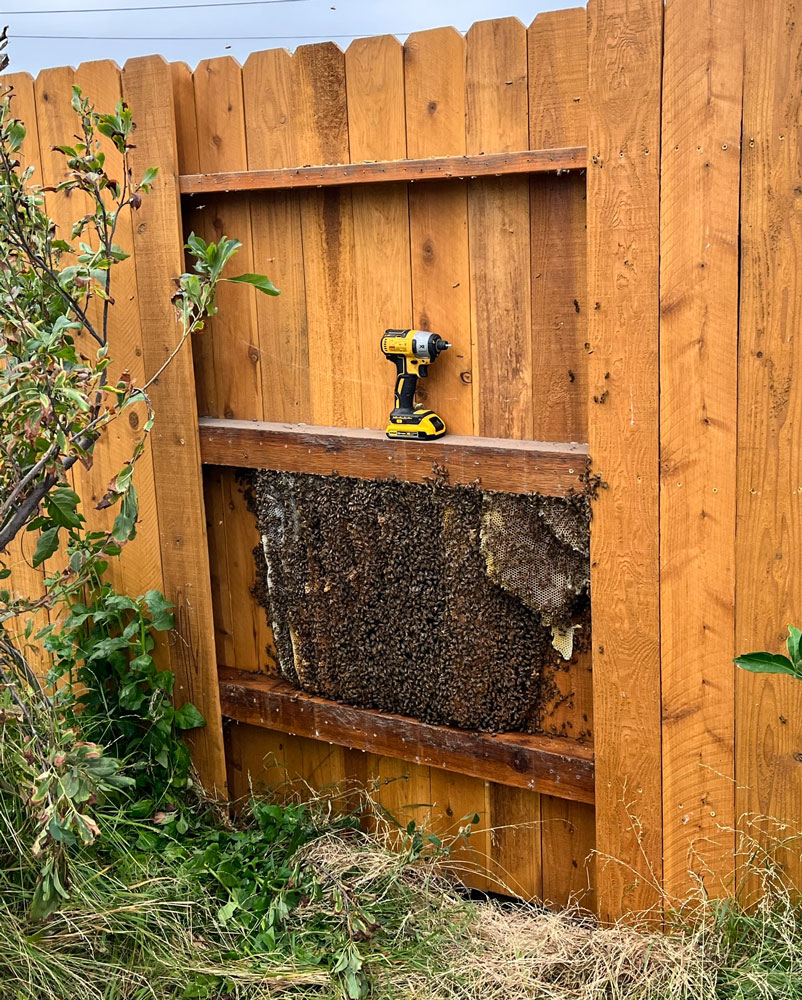
However, many of the bees had retreated to the cavity on either side of the comb so I had to remove more boards to be able to get to them. Eventually their retreat was stopped by a fence post.
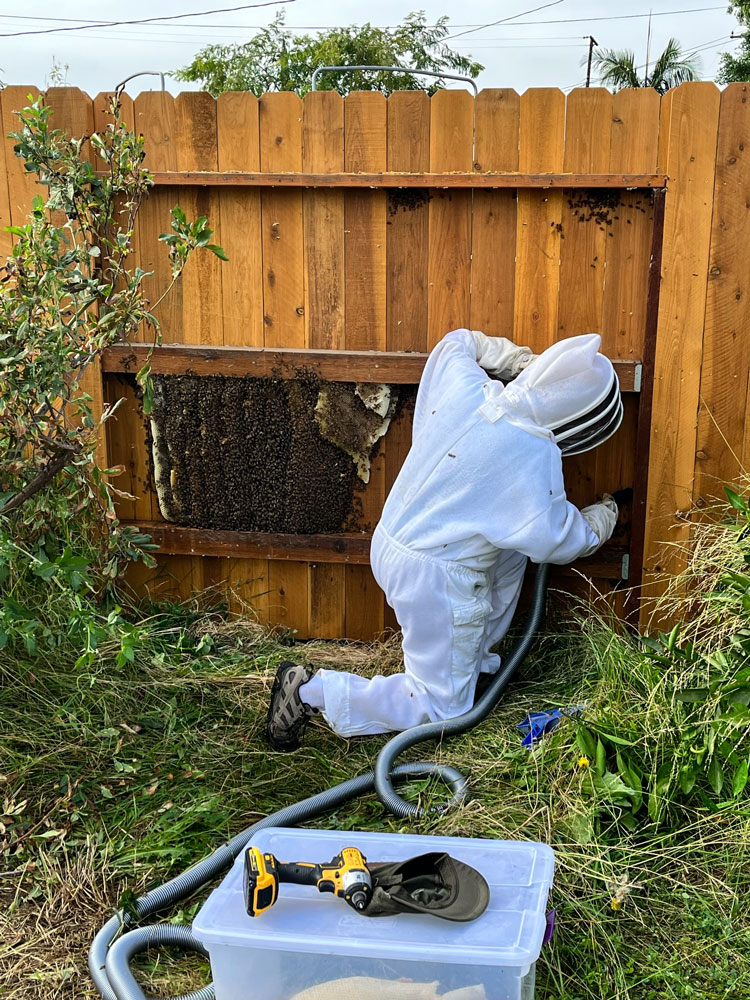
After I got all of those bees (on both sides) I began to work on the comb. I cut the comb away from the slats on the other side and the top, and vacuumed the bees off of it. Look at this piece of comb - lots of good brood and honey at the top. This was a very successful hive. I didn't count how many pieces of comb I took out, but it was quite a few.
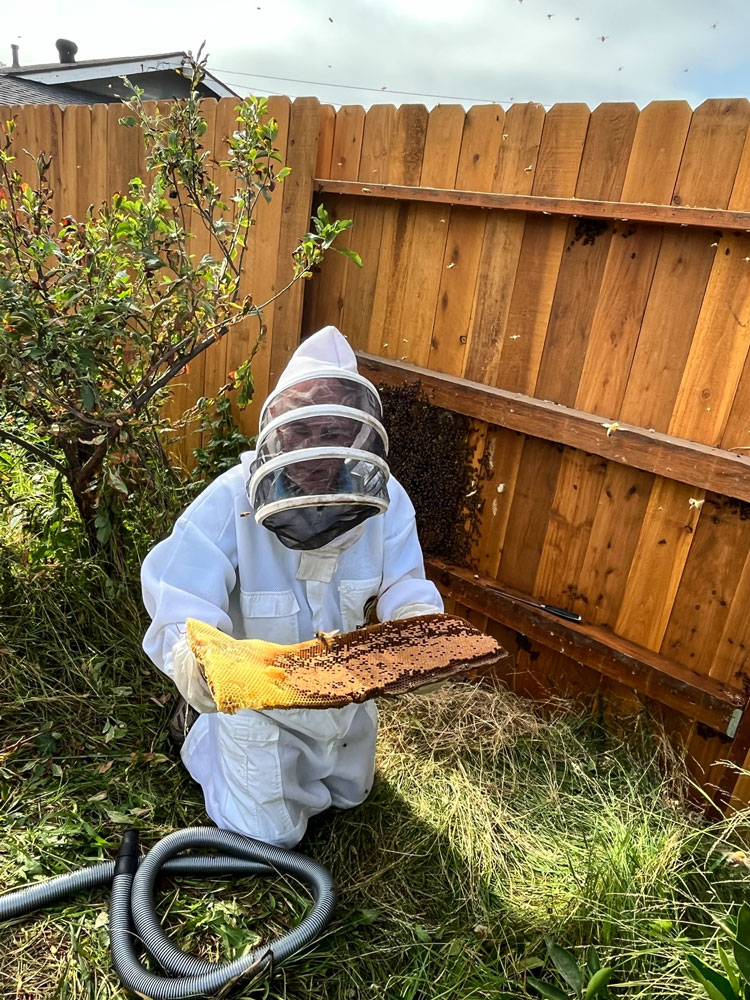
When I got the bees home, I put some of the brood comb into frames. It's a race against time because if the brood gets too cold it will die. I don't try to put all of the brood into frames because that would take too long. I'll usually do two or three frames of brood.
I don't have any pictures of me putting the comb into frames because I didn't have anyone to take pictures while I was doing it.
I put the frames with brood in the center of a brood box and then put the bee vacuum on top of that box and pulled the bottom slide out of the vacuum so the bees could go down on the brood and keep it warm.
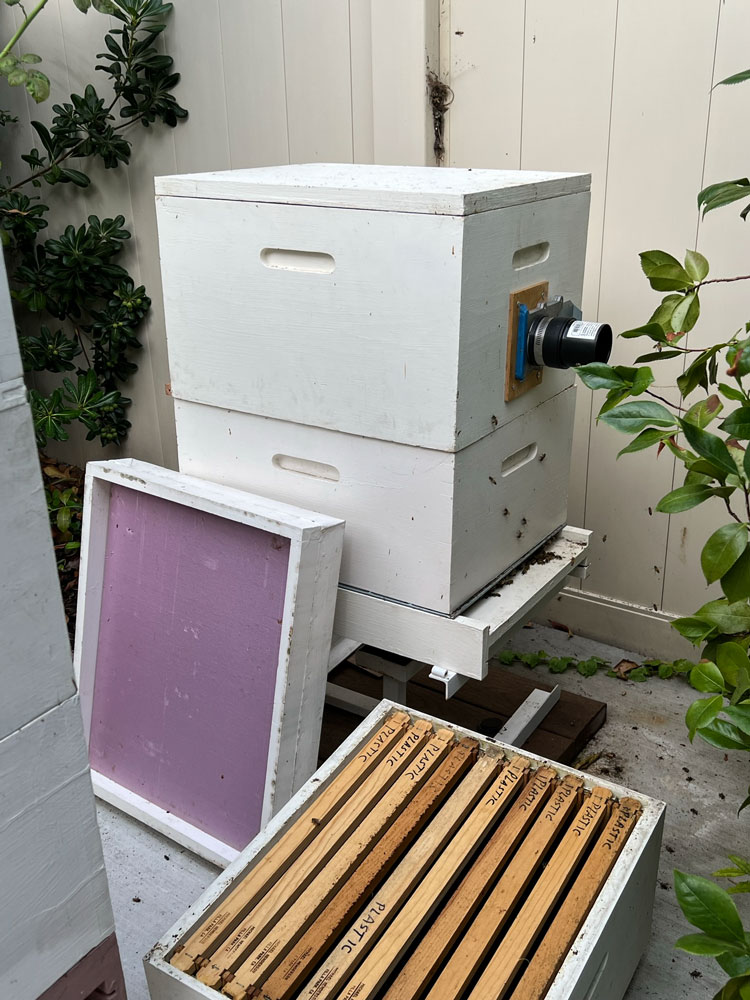
The next day, I removed the bee vacuum and put a second brood box on the hive. The reason for the second brood box is simply because of the size of the hive. I wanted to give them enough room to be inside.
Hopefully, I got the queen and she'll start laying quickly. It'll take a couple of weeks for me to know.
There were some eggs in the comb I gave the bees, so if there's no queen perhaps they'll raise a new one.
The bees were very docile. If a hive is going to be aggressive, they act that way when the hive is large, with lots of bees and comb. This one had lots of bees and comb and were very docile.
I didn't warn Amy, but if she does not close up all the possible entrances, another swarm of bees will find that cavity and set up housekeeping there.
++++++++++++++++++++++++++++++++++
September 7, 2022 I opended the hive today and there's lots of brood so it looks like the queen is there and laying. It's only been two weeks since I captured them, so it's possible I'm seeing brood from eggs that were in the comb, but I doubt it.
++++++++++++++++++++++++++++++++++
September 29,2022 I went into the hive today and the bees are doing well. I have two brood boxes on the hive and they have brood in the upper box, as well as in the lower box. It's only one or two frames in the upper box where they have brood, but they're certainly expanding. They have several frames of brood in the lower box.
I have another fairly new hive that I got from my friend, Janet, and it's doing well, also. It was not as big as the one I got from Amy so it didn't expand quite as fast, but I've had it longer than Amy's hive. It's into the second brood box, also. That gives me four hives, all docile. If I don't have any problems over the winter and spring, I'll have a lot of honey next year.
I looked into my two mature hives and they have a fair amount of honey, but only a few frames fully capped. They have quite a bit of space to store more honey so I probably won't harvest any more until late spring.